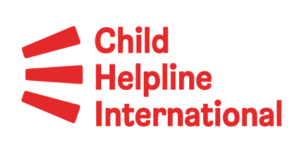It is estimated that 1 in 5 children in Europe fall victim to some form of sexual abuse during their childhood. Child sexual abuse and exploitation (CSEA) are serious crimes that have wide-ranging and life-long consequences for survivors. Child sexual exploitation and abuse can take many forms, and the influx of new technology into children’s lives has broadened its scope to the online sphere.
When we address complex issues such as child sexual abuse and exploitation, we must take three different perspectives on areas of intervention: prevention, detection and victim support. Child helplines have a key role to play in all three intervention areas, which I will outline below. Our wish is for the key role of child helplines in addressing (online) child sexual exploitation and abuse to be further recognised in national and regional (EU) policy, with appropriate resourcing available.
Prevention
Firstly, child helplines are essential in the prevention of child sexual abuse, through their provision of child-friendly, accessible support, and guidance around the different issues that increase or decrease risk for child sexual abuse. This includes providing support and guidance around family dynamics and peer relationships, sexual education, mental health concerns, including loneliness, and on being a part of a minority community, for example LGBTQI+ young people, or children with a disability. Because they are present on the same platforms as children – including social media and messaging apps – child helplines can make it easy for children to seek help for their concerns as early as possible, therefore contributing towards the prevention of sexual abuse. Below is an example of a contact with a child helpline that can have a preventative effect:
“A 13-year-old girl contacted a child helpline to ask for advice on what to do about her boyfriend, who was pressuring her to engage in sexting. The counsellor and the girl discussed privacy, self-esteem and the importance of not giving in when pressured. The counsellor also provided her with emotional support.”
Detection
Child helplines are also key in detecting cases of child sexual abuse due to their accessibility, confidentiality and expertise in child counselling. Child sexual abuse is notoriously underreported, and the removal of barriers for children to access support is essential to address this. Child helplines are often the first contact a child has with national child protection systems, and they help the child to build trust and confidence to engage with further support.
“A young person contacted a child helpline to talk about his fear of seeing his uncle again. He told the counsellor that he had stayed with his uncle for a while, and during this time the uncle had abused him, sexually and emotionally. The young person now lived back at home but was due to visit his uncle the following weekend. The counsellor validated the young person’s feelings, expressed their concerns about the situation and explained the young person’s rights to him. The young person provided details so that he could be identified, and a referral to social services was done by the child helpline counselling supervisors.”
There are several key components of child helplines that are helpful to make reporting and detection easier:
- Accessibility: child helplines are low-threshold, freely and directly accessible for children. Child helplines also provide services through several different voice-based, text-based – and in some cases sign-based – methods of communication, including phone, text, chat, social media and sign-language.
- Confidentiality – child helplines are confidential and make it clear to children if, when and how confidentiality needs to be broken to protect the child from serious harm. This promotes a sense of control and trust, which helps children feel comfortable disclosing at their own pace, while ensuring the safety of the child at the same time.
- Child counselling expertise – child helplines are experts in providing counselling for children, including supporting the process of disclosure.
Victim Support
Child helplines are also essential in the support of victims and survivors because of their expertise in child-friendly counselling, in child participation and their extensive professional referral network. In more detail, child helplines have the following characteristics:
- Child counselling expertise – child helplines are experts in providing counselling for children to provide immediate, trauma-informed support.
- Child participation – child helplines have expertise in explaining child protection processes in a way that the child can understand, as well as involving the child in finding solutions to their situation. This helps facilitate the predictability of the process and promotes a sense of control for the child.
- Referral services – child helplines have extensive, effective referral networks with local authorities, law enforcement and other organisation to ensure the child receives the longer-term intervention they require.
The following case illustrates an example of how child helplines build trust with young persons, and work together with the child to report to the relevant authorities:
“A girl called a child helpline to talk about an argument she had with a staff member who worked at the residential care home where she lives with a sibling. The girl, who was very upset and crying, went on to provide more information about something that had occurred a few months earlier, with a male staff member. This staff member came into her room at night to check on her, since she had not been feeling well. He felt her head, but then touched her chest, the area around the genitals and held her hips. The girl recalled how she had felt terrified, trapped and uncomfortable, and did not understand what was going on. The morning after, she told a new staff member who came on shift what had happened and they advised her to not say anything, saying that the issue would be resolved internally. The girl trusted the child helpline counsellor and provided the necessary information to report what had happened to the police, who promptly intervened.”
Child helplines are recognised as victim support practitioners by key partners, including in WeProtect’s Preventing and Tackling Child Sexual Exploitation and Abuse (CSEA): A Model National Response as being central to victim reporting and support, as well as referrals to services for ongoing assistance.
What Needs to Change
Child helplines play an invaluable role in the prevention of (Online) Child Sexual Exploitation and Abuse through the provision of information, guidance and support on the different issues that increase or decrease risk. Child helplines also provide a low-threshold, child-friendly, confidential and safe service for children to build trust in the system and eventually disclose sexual abuse and exploitation, making further action and support possible. To ensure these key services continue and develop further, governments and donor organisations, including the European Commission, must ensure that national child helplines are fully resourced, so that their personnel are trained in trauma-informed counselling, are able to provide services using multiple methods of contact (e.g. chat) and so that they can maintain and enhance structures for supervision and support to ensure the wellbeing of the counsellors who handle these sensitive issues.
Ronja Ulvfot
Regional Manager, Europe


